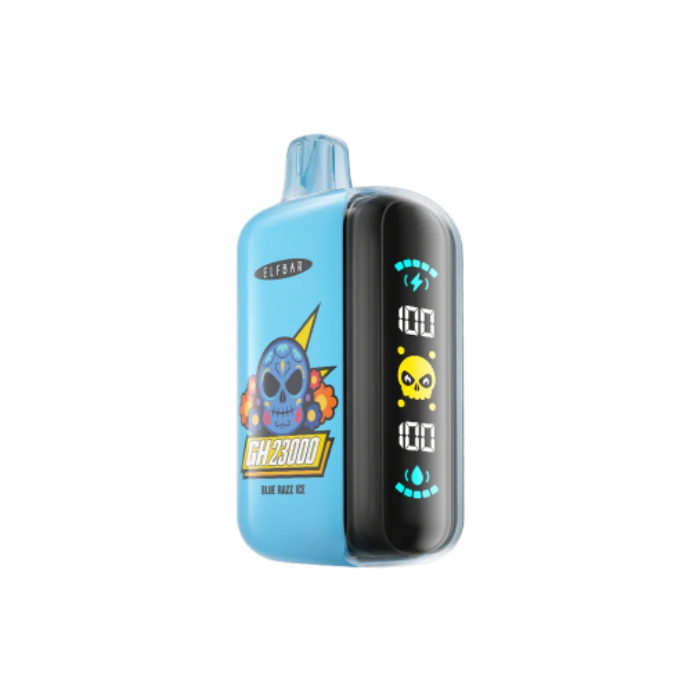Walking through a metal detector always feels like a pop quiz you didn’t study for. You know you’re probably fine, but there’s still that tiny voice in your head whispering, What if I forgot about some rogue piece of metal in my pocket? Now, throw a vape into the mix, and the stakes feel even higher. Is this little device about to set off an alarm and get you an unplanned chat with security?
This question comes up a lot, especially for people who travel frequently or attend events with strict screening. Vape pens are small, mostly plastic, and don’t exactly scream “dangerous contraband,” but they do contain metal components. So, will your vape slip through unnoticed, or is it about to betray you at the worst possible moment? Let’s break it down and separate fact from unnecessary panic.
Understanding Metal Detectors
To really answer the question of whether your vape is about to betray you at a security checkpoint, you first need to understand what’s going on inside those mysterious archways we casually stroll through. Metal detectors may seem like magic, but they’re really just machines with a one-track mind—detecting metal parts and making life mildly inconvenient.
At their core, metal detectors work by generating a magnetic field and waiting for something metallic to disrupt it. When an object made of different materials interacts with the field, the detector picks up the change and triggers an alert. But not all metals are treated equally. Some are highly conductive and easy to detect, while others are less reactive. This is why your belt buckle might set off an alarm, but the handful of coins in your pocket might not. It all depends on the type, amount, and shape of the metal.
Security systems use different types of metal detectors depending on the level of threat assessment needed. The standard walk-through detectors at airports? Those are designed to pick up metal parts associated with weapons or potential threats. The handheld wands? They work on a smaller scale, detecting objects up close. And then there are the X-ray machines at airport security, which don’t rely on magnetic fields at all but instead scan the contents of your bag with high-energy radiation—great for spotting a vape buried under your socks.
Airport security
Speaking of airports, security screening at these locations is no joke. Most airlines have strict policies when it comes to carrying e cigarettes and vapes through checkpoints. If your vape is in your pocket, it might trigger the walk-through detector. If it’s in your bag, it’s definitely showing up on the X-ray scan. Either way, airport security will likely notice, and if you’re not following their specific rules, expect a conversation.
According to the TSA website (and Canadian equivalents like CATSA), e cigarettes and vaping devices must be stored in carry-on luggage due to their lithium-ion batteries. Checked baggage is a no-go for these devices because lithium batteries don’t mix well with the air pressure changes that happen during flights. Nobody wants a surprise fire in the cargo hold. And while we’re at it, most airlines also have restrictions on e liquids, so if you’re traveling with bottles of vape juice, make sure they comply with liquid limits.
One thing that often catches people off guard is how metal detectors differentiate between everyday items. Cell phones, for example, are loaded with metal components, yet they often don’t trigger alarms if placed in a bin before walking through. Vapes, being smaller, sometimes go unnoticed in pockets—sometimes being the key word. It all comes down to the sensitivity settings of the security systems in place. Some detectors are cranked up to the max, ready to sound the alarm over a forgotten paperclip, while others are more forgiving.
Ultimately, while a vape does contain metal parts, it’s not always enough to set off a detector unless security is operating at a high sensitivity level. That being said, if you’re walking through with a big, bulky mod or carrying multiple e cigarettes in your bag, don’t be surprised if security stops you for a closer look. They’re not necessarily worried about health risks—they just really, really like catching stuff on their scanners.
Components of Vape Pens and Their Metal Content
Vape pens may look sleek and simple, but beneath their smooth exteriors, they’re basically tiny machines built for one job—turning vape juice into a satisfying cloud. But, like any piece of tech, they rely on various components to function, and that means metal is involved. Just how much? Enough to detect metal objects? Let’s take a closer look.
At their core, vaping devices consist of a battery, a heating element (coil), a tank or pod for holding vape juice, and a mouthpiece. The battery is the powerhouse, the coil is where the magic happens, and the tank is what keeps everything running smoothly. Each part plays a role, but if we’re talking about what might set off vape detectors at security checkpoints, the coil and battery are the prime suspects.
Most disposable vapes keep things minimal, often using lightweight aluminum or stainless steel. These materials are sturdy but not particularly dense, meaning they may or may not register on certain security scanners. More advanced vaping devices, like mods or refillable units, often contain larger metal components—especially when it comes to external casings, reinforced tanks, and multi-battery setups. If you’ve got a vape device that looks like it could double as a piece of an electric car, chances are it’s packing enough metal to grab a detector’s attention.
Heating coil
The heating coil is another key player in this scenario. Typically made of stainless steel, nickel, or kanthal, this small but essential piece is what turns liquid into vapor. Individually, a coil isn’t much, but when combined with the rest of the device, it adds to the total metal content. If you’re traveling with multiple coils packed in your carry on luggage, that could be enough to flag a detector, especially in places where scanning is dialed up to maximum sensitivity.
Battery
And then there’s the battery—usually a lithium-ion power source encased in metal. While the battery itself isn’t always enough to trigger security, it’s still one of the most noticeable metal objects in a vape. It’s also the reason why airlines have strict rules about carrying vaping devices in a carry on bag instead of checked luggage. Lithium-ion batteries don’t mix well with pressurized cargo holds, so if you’re flying, make sure your electronic cigarette or vape mod is stored properly to avoid any unnecessary hold-ups at security.
Compared to traditional cigarettes, vaping devices have a lot more going on in terms of metal content. A pack of smokes won’t set off a detector, but a bulky vape mod with a heavy-duty tank and multiple batteries? That’s a different story. And while vape detectors aren’t necessarily a thing in the same way smoke detectors are, security scanners are more than capable of identifying metal-heavy vape products during screening.
So, does your vape device contain metal? Absolutely. Will that metal be enough to trigger a detector? That depends on the size, design, and sensitivity of the scanner you’re walking through. If you’re carrying a lightweight disposable vape, your odds of slipping through unnoticed are higher. But if you’re rocking a high-powered mod with enough metal to detect metal objects from across the room, you might want to prepare for an extra security check.
Can Vape Pens Trigger Metal Detectors?
Alright, let’s get to the real question. Will your vape make security alarms scream at you? The answer is a strong maybe.
In casual environments—like some concert venues or malls—metal detectors tend to be less sensitive, designed more for catching weapons than small personal devices. In those cases, a standard vape pen might just slide through unnoticed. Security staff are usually more concerned about large objects, so unless you’re packing a vape the size of a brick, you might not even get a second glance.
Airports, however, are a different beast. Those detectors are dialed up to catch everything. Even a forgotten paperclip in your pocket could trigger a second screening. If your vape has a decent amount of metal in it, there’s a strong chance it’ll set off an airport metal detector. And if it doesn’t? Well, there’s still the x-ray machine waiting for you at the conveyor belt, where TSA (or in Canada’s case, CATSA) is going to see exactly what you’re carrying.
This doesn’t mean your vape is contraband—it just means you might have to take it out of your pocket before stepping through. Most airports are cool with you bringing a vape, as long as it’s stored properly in your carry-on and follows liquid restrictions. But if you’re planning to sneak one past security, you’re playing a game with terrible odds.
As for places like courthouses, government buildings, and schools? Expect metal detectors to be just as sensitive as airports, and expect staff to be even less amused if they catch you with a vape in your pocket. If the goal is to avoid attention, a jacket pocket or bag is a much safer bet than waltzing through a checkpoint with it clipped to your belt.
One last wildcard—handheld wands. If a security guard does a secondary sweep with one of those and your vape is in your pocket, it’s very likely going to be detected. Those wands don’t care about metal size; they just know metal when they see it. So if you’re carrying a vape in a place where security is scanning with wands, be prepared for some questions.
Frequently Asked Questions
Can a metal detector detect a vape?
Metal detectors scan for metal parts, and since vapes contain metal components like coils and battery casings, they can trigger an alert.
Will a Geek Bar vape go off in a metal detector?
Geek Bar vapes are disposable vapes, which means they tend to have smaller, lighter components compared to bulkier reusable vaping devices. While they do contain some metal, it’s not a lot. In lower-sensitivity settings, like at a concert or casual event, they might not trigger anything.
Can airport metal detectors detect vapes?
Yes, and not just the metal detectors. Airport security screening is designed to catch everything—including your vape. Even if your device doesn’t set off the walk-through detector, the X-ray scanner is guaranteed to spot it in your carry-on.
How do I stop my metal detector from detecting my vape?
You might be able to avoid setting off a walk-through metal detector by placing your vape in your carry-on bag instead of your pocket. But if security has an X-ray scanner, there’s no hiding it.
Summary
So, do vapes set off metal detectors? The answer is sometimes. If you’re walking into a place with high-security settings, expect a vape—especially a larger one—to trigger a detector or at least show up on an x-ray scan. Smaller vapes, like disposables or compact pod systems, might slide through in lower-security areas, but there’s no guarantee. If avoiding awkward security interactions is a top priority, keeping your vape in your bag instead of your pocket is a smart move.
But hey, while we’re talking about vapes, you might as well know where to get the good stuff. NativeSmokes4Less has got you covered for all things nicotine—classic cigarettes, cigars, nicotine pouches, and, of course, vapes. No sketchy knockoffs, no questionable quality—just legit products at prices that don’t make your wallet cry.
So if you’re in Canada and looking for a solid stash, you know where to go. Just maybe don’t try to sneak it through airport security like a secret agent. That never ends well.






















